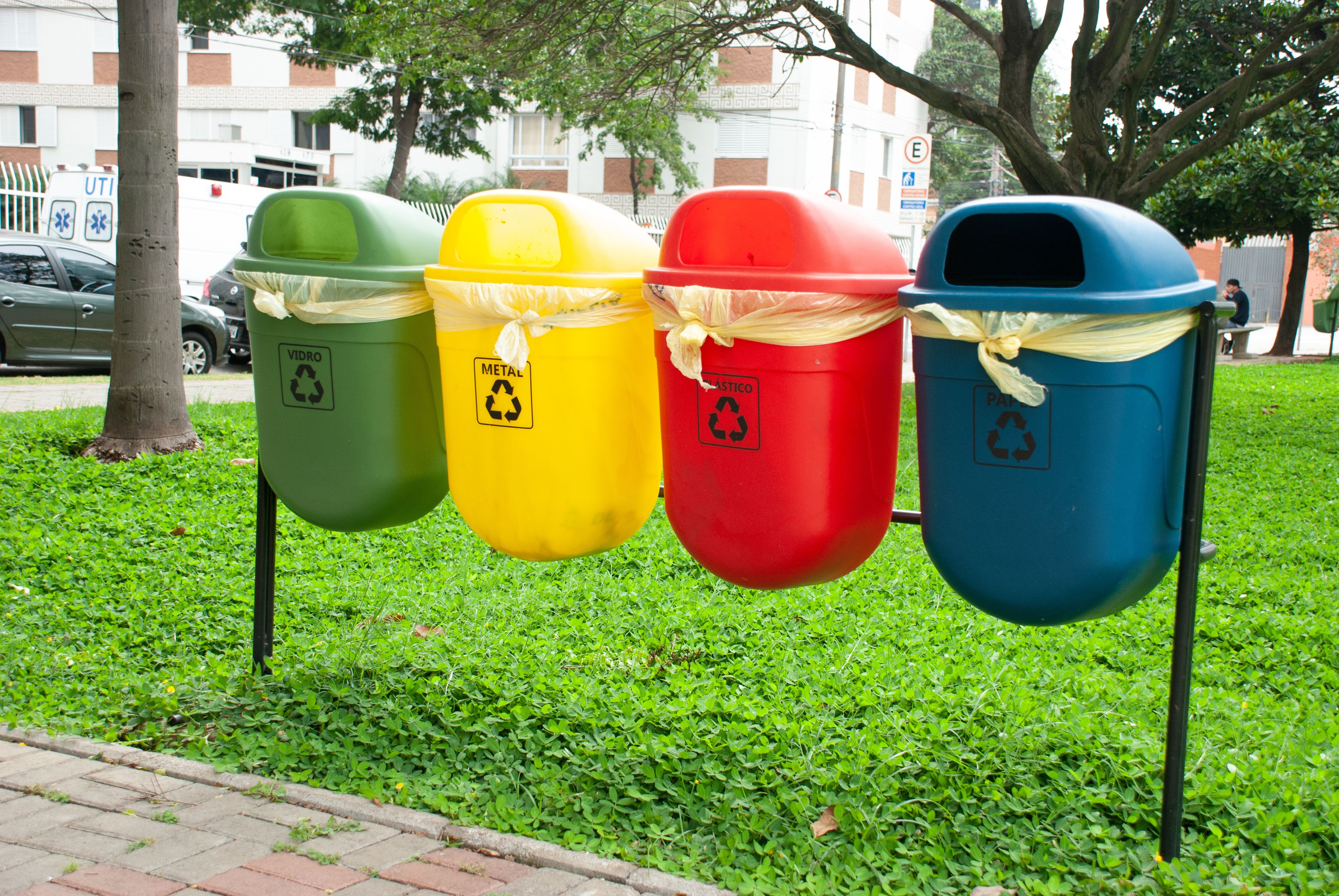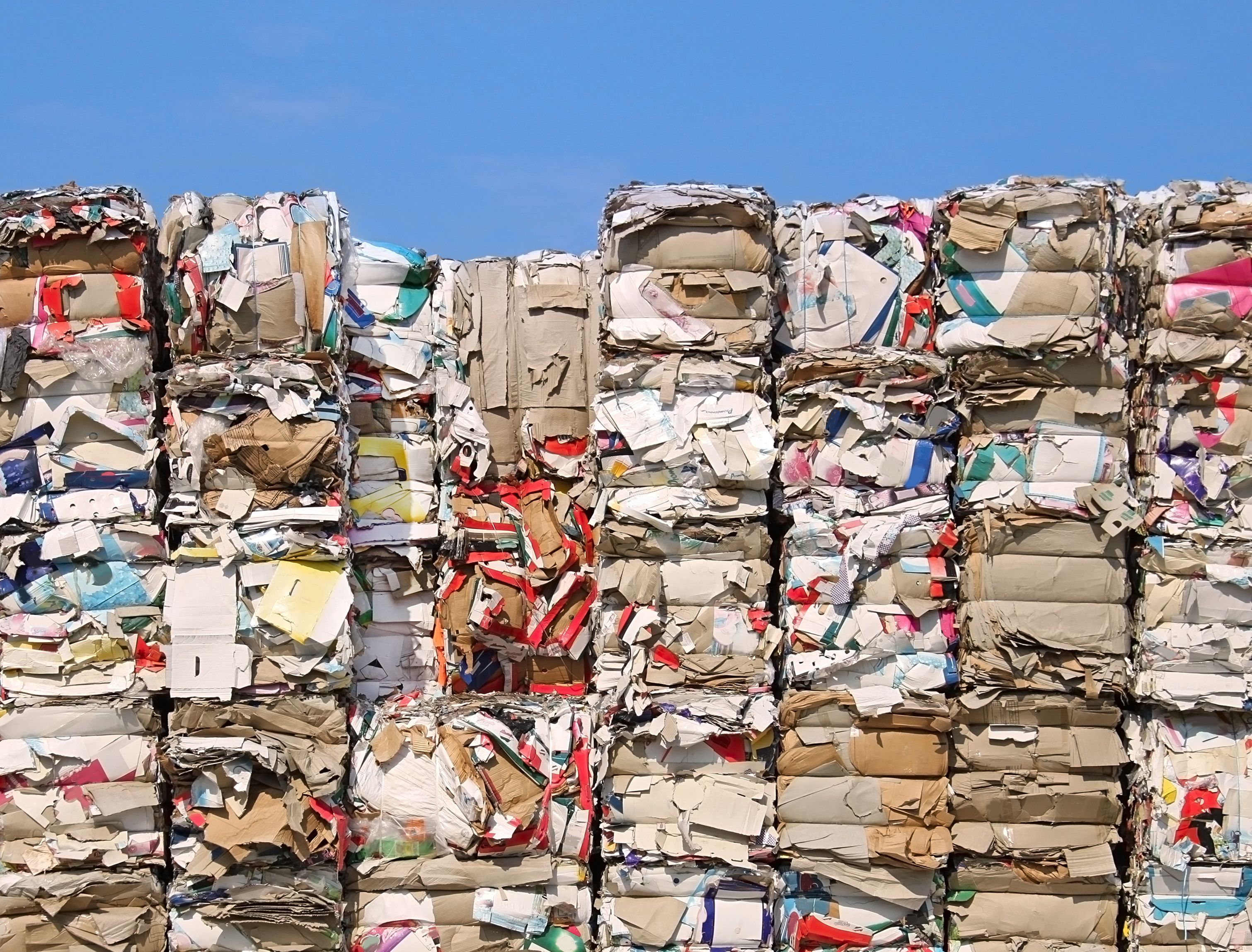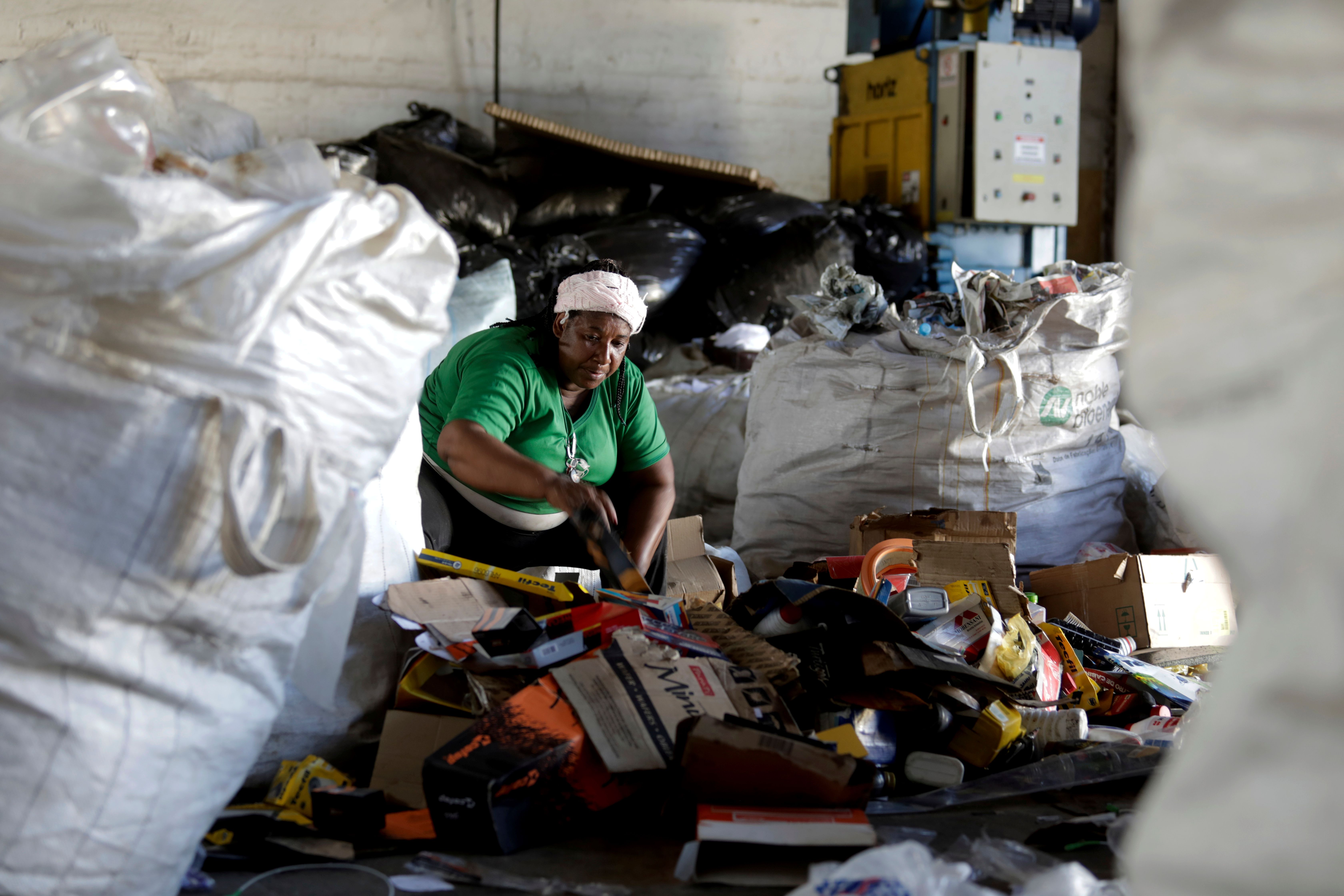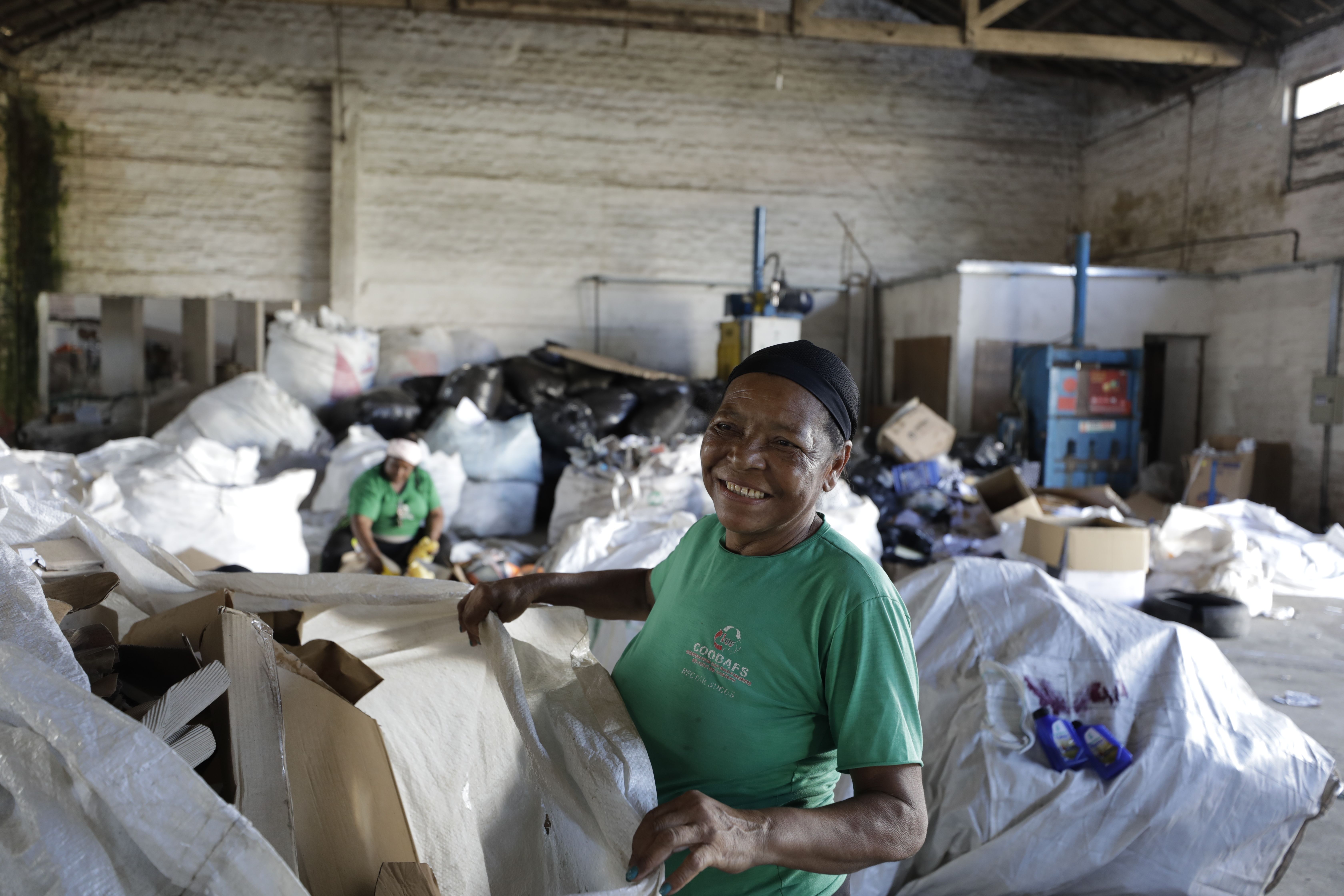What it is
Recycling is the process of recovering and converting materials into new products. Recycling paper and cardboard into new paper and cardboard products helps keep these materials out of landfills, where they would decompose and emit methane.

Where it can be used
All communities.
How it works
Paper and cardboard waste is typically recycled into new paper and cardboard. (It can also be recycled into cellulose derivatives and bioethanol). The paper-recycling process usually involves five main steps.
- First, paper waste is collected and transported to a sorting facility.
- Next, the paper is sorted and baled together into categories.
- These bales then go to a paper mill where the paper is shredded and pulped, and other materials, like paperclips and staples, are removed.
- Dyes and inks are then removed from the pulp in a process called de-inking; the pulp may also be bleached.
- Finally, excess water is removed from the pulp and it is passed through hot rollers that flatten it and transform it into paper.

Who’s doing it
Just 2% of waste gathered in Latin America is recycled, on average. However, communities from across South America have implemented successful programs that have improved recycling rates.
Policy Considerations
Segregating Waste
Separating waste at the source plays a critical role in successful recycling and composting initiatives. Sorting waste into broad categories at the level of households and businesses makes it easier to organize solid waste management. At later stages, waste can be sorted into more specific categories mechanically or manually.
Segregation policies and guidelines can be implemented at the local or national level. For example, Costa Rica’s Comprehensive Waste Management Law requires municipal governments to provide accessible, regular, and efficient waste collection services that involve separation at the source. In contrast, Mexico City created a separation program at the local level that incorporates waste pickers at every stage.
The waste management system must also be set up to accommodate separation. Some jurisdictions collect different types of waste on different days. Depending on local needs, governments may also need to invest in trucks for specific types of waste or which allow collection of multiple types of waste at once.

Financing
Recycling initiatives can be financed in a variety of ways, including funding from the government and fees from users. In Colombia, the national government, through the Water and Regulation Commission (CRA), has implemented a tariff-based approach for solid waste management. Tariffs are charged to households and businesses based on the weight of their waste, among other variables. Low-income households are subsidized by the government, while higher-income residents pay tariffs for using the system.
Governments can also seek funding from the United Nations or other multilateral institutions by developing recycling projects with clear tie-ins to climate action and the sustainable development goals. For example, the UN Environment Programme’s Circular Economy Coalition for Latin America and the Caribbean provides members with resources and funding opportunities for waste management solutions that tie back to the circular economy.
Communication and education
Educating and communicating with the public about the importance of recycling and its benefits, as well as how to segregate waste, is essential for success.
Resources
C40 Cities: How cities can boost recycling rates
C40 Cities: Sustainable development benefits of Integrated waste management
The Circular Economy Coalition for Latin America and the Caribbean
UN Environment Program: Unlocking Circular Economy Finance in Latin America and the Caribbean
